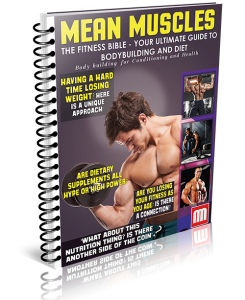Do you feel like you have reached a plateau with your bodybuilding regimen? Are you not able to increase your gains despite incorporating some of the more advanced techniques like the stomach vacuum?
Well, worry not, because today we are going to introduce you to one more technique to include in your muscle training. Well, worry not, because today we are going to introduce you to one more technique to include in your muscle training. Popularly known as ‘muscle flexing’ ISO tension, is one of the easier ways to develop muscle gains and define your core without the need of weights or any special effort.
Read on to find out what it is, what are its benefits, and how you can integrate it into your bodybuilding training.
What is ISO Tension?
Sometimes written as ISO-tension, it is a form of flexing without moving the muscles and without using any weights or equipment. Technically defined as “equal tension”, it involves putting a muscle of a single or multiple body parts under tension while keeping them in the same place. Consider the plank exercise, for instance, where you stay motionless on all fours and let the tension – or the suspension of your muscles – do the work.
The principle here is very basic: when you put your muscles under stress over a long period of time (in sets), it develops a natural ability to withstand more stress, thereby improving their overall strength. This is a progressive effect and is known to have benefits like stabilization of muscles, lowering blood pressure, and advancing your mind-to-muscle connection, ultimately improving focus and capacity.
In a way, ISO-tension is the poor man’s bodybuilding trick. It is usually adopted by builders who want to add a diverse set of activities into their regimen. Practiced for several decades now and advocated by some of the biggest names in bodybuilding, ISO-tension has quickly become a common part of any muscle training course.
How to Practice ISO Tension?
Since it’s basically a form of flexing, ISO tension can be practiced in many different ways. The ideal way, however, is to perform it in the resting period or during the exercise. The former is the reason why it is often called the ‘finishing exercise’.
Consider a specific part of your body where you want to flex your muscles and then carry out an associated exercise. For example, we will focus on the abdominal muscles (because we know that’s where you’re struggling). While doing crunches, after every set, hold the contraction position between 6 to 10 seconds. Holding the muscles under tension repeatedly with every set over a period of time can give you the desired effect. And later when your squad asks you about the improvement, tell them about this little magic called ISO tension.
For more variations, you can check out this brief guide by our friends at Flex.
How Does ISO-Tension Boost Muscle Definition?
While the effects of ISO-tension are tempting, you may be wondering about its actual impact on your muscle training. As you already know, in addition to a nutritious diet and progressive training, you also need to practice muscle growth and expansion if you want to stay relevant and useful in the scene.
As bodybuilding is all about how good and strong your muscles are and what they can do when you are on the stage, it makes sense to invest in practices that develop their capacity. ISO tension is, therefore, an exercise that can help you gain and retain more glycogen, which in turn can give your muscles the fullness that you desire.
Muscles stay active when they have enough source of nutrients and activity at the same time, and with ISO tension, you can easily develop a fine muscle definition. Do note that you have to carry out the exercises throughout the body in order to see a blanket impact. One more way to practice this finishing exercise is to tie it up with the popular Turbulence Training program for fat loss. A perfect way to boost muscle growth and define it the way you want.
What is Flushing?
Flushing is a sub-technique of ISO-tension where you maintain contractions at multiple points before releasing the flex. For example, suppose you are doing the cable chest fly. After releasing the cables after the first set, you can maintain the contractions for up to 10 seconds and follow it up reverse gradually. This way, your muscles remain active for a longer period of time, as opposed to a number of shorter spans.
If you are specifically gearing up for a stage show, you should also practice ISO tension outside the gym and through posing. Select your best poses and practice them every day – but, with only one difference. Stay with your muscle contractions for a little while longer to train your muscles.
Conclusion
There you have the basics of ISO tension. An easy and effective way to boost your muscle definition and keep them active during your bodybuilding routine. Remember to breathe and complement it with proper diet. All the best!
The Fitness Bible – Your Ultimate Guide to Bodybuilding and Diet:
Bodybuilding for Conditioning and Health
The Astonishing Bodybuilding, Diet and Fitness Secrets
of the Fittest Bodybuilders in the World Revealed!


